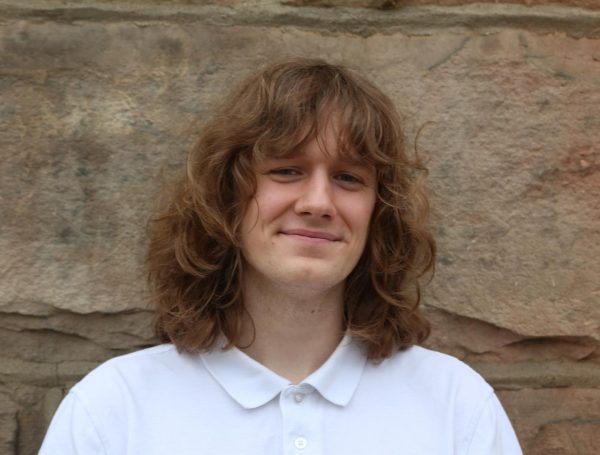Artwork generated by artificial intelligence is gradually getting better — far better than I would have expected since DALLE-2 swept the nation in 2022 with its iconic failure to generate the correct number of fingers. The technology has gotten so good that companies are now willing to air AI-generated advertisements on national television.
These ads vary in quality. Honda has since delisted their 2025 “Happy Honda Days — Rugged” commercial, which featured nauseatingly distorted AI-generated backgrounds akin to an LSD trip simulation. Coca-Cola’s holiday commercial, on the other hand, could possibly fool your parents or grandparents into thinking it was filmed and edited professionally.
Soon, possibly in only another few years, AI-generated art and video may be almost completely indistinguishable from the real thing without an explicit indication. In 2022, I loved dogging on AI’s terrible quality more than anything, making fun of its mangled hands and dead expressions, but these reliable errors are starting to become less common. Though a lot of AI artwork is still quite easy to pick out and bite my thumb at, it seems this critique that AI’s technical quality will always fall short of the real thing may be on its way out the door.
When the day comes that even the staunchest AI critics can’t immediately distinguish a generated piece from a real one, it will be important to remember the real reason that artificial intelligence still deserves no place in the artistic community. That is, AI-generated artwork fundamentally lacks meaning compared to art made by humans.
Art is a mysterious thing that demands we engage with it over and over and over again, peeling back another layer each time we revisit it. The artist’s technical ability might be what catches our eye when we see a portrait on the museum wall, but it’s their countless little decisions that culminate into one work of art and truly allow us to connect with a piece.
Human-made art allows us to return to it with new knowledge and new experiences, appreciating new emotions and decisions hidden in the work depending on where we are in our own lives. When I was a teenager, I listened to 22-year-old singers belting about 22-year-old problems. I loved them then and I love them now, because the songs change every year I grow older. As I learn new things about my own life, I find those new things inside the lyrics I’ve listened to hundreds of times. Now these once 22-year-old artists are closer to 28, releasing new music about their own new experiences that I’ll get to revisit and relate to for years to come.
AI art has none of that. What you see is exactly what you get. There are no hidden layers, personal impressions or relatable emotions. The “meaning” of an AI-generated artwork is its prompt, and everything else we could possibly account for in the piece is arbitrary. It lacks intentionality, and this deteriorates our ability to connect with art and the world around us.
Consuming art with meaning trains us to ask “Why?” and trains us to answer those questions within the context of a life and a culture. Even the easy questions, like “Why does Ice Cube want to ‘f— tha police’ if they’re supposed to protect and serve?” point us toward the notion that perhaps what we see as an institution that upholds safety and civility may not actually be what we get. That “Why?” leads to a train of questions about N.W.A., late-’80s Compton, incarceration practices and the legacy and persistence of racial profiling today.
Though you can ask AI to generate a song about police brutality or a movie script about gender dysphoria or a portrait about the AIDS epidemic, there’s nothing more you can ask about the thing it generates. The extent of the meaning of that portrait about the AIDS epidemic is that it is a portrait about the AIDS epidemic. Any additional nuance or symbolism is entirely accidental, stolen from real artists who made real artwork based on their experiences in the ’80s. AI has no answers for those questions of “Why?” and when there are no answers, we’ll begin to stop asking questions.
Art and culture are inseparably locked together, and the way we approach art will influence the way we approach the world. Real artwork allows us to put in the time to find every bit of meaning, which will send us off into the world with a desire to understand it. AI artwork can only be taken at face value, which trains us to view the world as something to simply observe. Without the ability to analyze and reflect, those observations will lead to ignorant and potentially dangerous conclusions about the life we live.
Human-made art enriches us and exposes us to stories and experiences we may never see in our own lives. It builds tolerance and appreciation by opening conversations about what it means to be human, strengthening our ability to critically examine things we may not immediately understand. Embracing this practice is one of our best tools to counteract the recent rise in hate and disinformation across our nation.
No matter how good a short AI film might look or how impressive the style of a generated illustration might seem, there is never anything real behind it aside from the sentences that make up the prompt. There are no questions to ask, no lives to understand and no reasons to revisit or reevaluate it.
If we accept simple art, we will lead simple lives. AI is already destroying our environment and our creative workforce — we can’t let it destroy our humanity as well.
Thomas Riley kind of gets what those Luddites were going on about. Email them at tjr83@pitt.edu.



